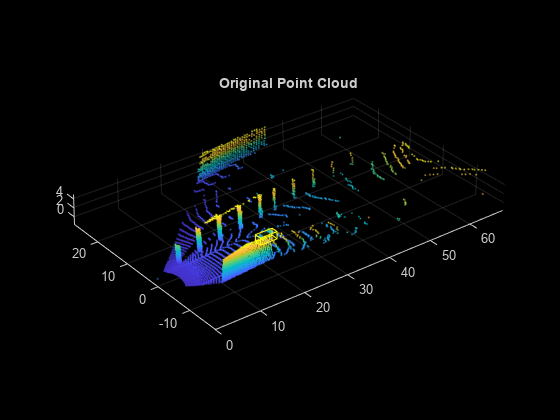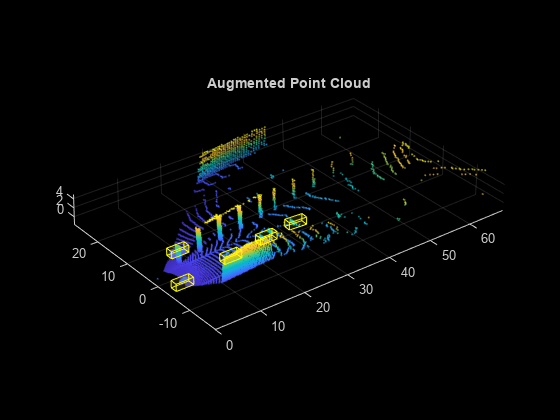sampleLidarData
Sample 3-D bounding boxes and corresponding points from training data
Since R2022a
Syntax
Description
[
samples 3-D bounding boxes and the corresponding points from the specified training data and
returns them as datastore objects.pcds,blds] = sampleLidarData(trainingData,classNames)
[
specifies one or more name-value arguments in addition to all input arguments from the
previous syntax. For example,
pcds,blds] = sampleLidarData(___,Name=Value)sampleLidarData(trainingData,classNames,MinPoints=20) samples only
boxes that have a minimum of 20 points inside them.
Examples
Input Arguments
Name-Value Arguments
Output Arguments
Algorithms
Lidar object detection techniques directly predict 3-D bounding boxes around objects of interest. Data augmentation helps you improve prediction accuracy and avoid overfitting issues while training.
You can perform ground truth data augmentation on point clouds using these steps.
Sample 3-D bounding boxes and the corresponding points from input training data using the
sampleLidarDatafunction.Augment a point cloud randomly with the sampled bounding boxes by using the
pcBboxOversamplefunction. The function performs a collision test on the sampled boxes and the ground truth boxes of the input point cloud to avoid overlap.
This technique alleviates the class imbalance problem in lidar object detection.
Version History
Introduced in R2022a

